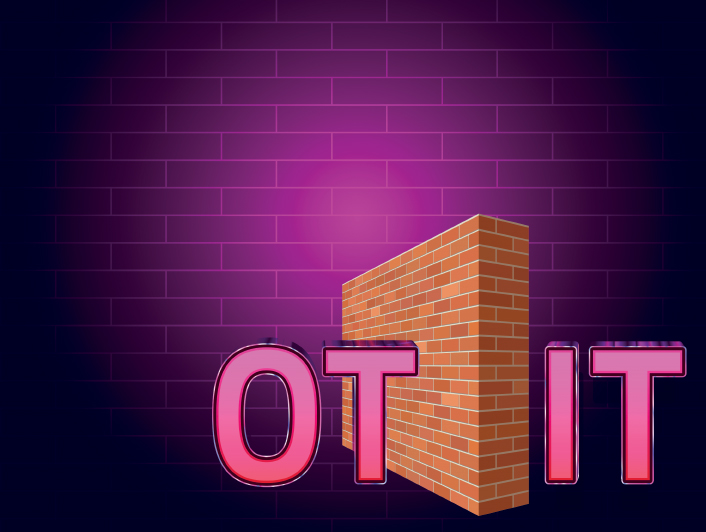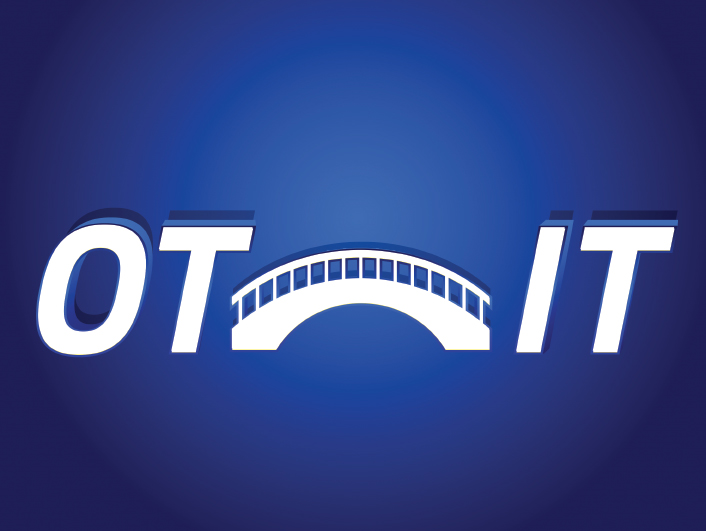A powerful convergence of change happening right now in the utility industry that is forcing utilities to re-think how they manage their operations, re-envision how they work with residential, commercial and industrial customers and re-invent their infrastructures. This perfect storm of events is caused by a series of significant challenges that are hitting simultaneously – creating the biggest industry-wide transformation since electric companies first wired the world for light and power more than a century ago.
I will discuss each of these challenges in a moment, but first, I should point out that there is a common thread that runs through any discussion of how to solve these issues – namely the need to build a bridge between two sides of utility operations that have been purposefully kept apart for decades: OT and IT.
The wall between OT and IT
Operational Technology (real-time control and monitoring of grid operations) and Information Technology (business systems and data) have long had a wall between them, with good reason. OT systems were typically built long before the emergence of IT, and utilities wanted to protect OT’s reliability from any negative impacts – including those that could come from IT systems. With that reliability goal in mind, organizations tended to keep OT and IT separated as much as possible.
Utilities are not alone when it comes to this OT/IT gap. This separation between long-established operational technology and faster-evolving IT systems is a common strategy for organizations whose history goes back decades. As an example, telecom companies whose roots go back to the pre-IT era, often still maintain enormous decades-old switching equipment the size of an entire building floor. It serves as the heart of their operations, and they are deeply cautious of reliability risks created at the intersections between legacy switch equipment and IT. Another example is government agencies whose pre-IT card punch-driven systems were kept isolated from IT for decades – long after punch cards were a distant memory in the private sector. To ensure reliability in many industries, OT stayed on its side of the wall, and IT stayed on its side.
But things are very different now. Maintaining that gap between OT and IT may once have been a recipe for reliability, but today it is a liability in the face of the massive changes facing utilities. To solve the multi-faceted challenges that the industry is confronting, utilities must build a bridge between these systems as a foundation for success.
The importance of OT/IT convergence
The challenges facing utilities range from evolving technology to climate change to the graying of its workforce:
- Rapidly accelerating electrification of the economy – The demand for electrical power is growing dramatically due to factors, such as the rising number of EVs on the road, the massive growth of data centers and the electrification of countless other machines and products. At DistribuTECH earlier this year, this acceleration was the topic that dominated conversations across the conference. Utilities have traditionally faced predictable, manageable growth in demand, with peak demand events being the largest challenge. Peak demand challenges remain persistent, largely due to the impact of climate change, and the overall demand for electricity is placing unprecedented strain on power grids. To meet this demand, utilities need to modernize their grids, rely on a broader set of energy sources and build more flexibility into how they manage energy distribution. All of these changes require far tighter integration between OT and IT systems.
- Climate change, severe weather and the need for greater grid control and resilience – As every reader of EE T&D knows, climate change is creating enormous challenges for utilities. The increasing frequency and intensity of wildfires, storms, floods and heat waves are creating operational challenges and public safety concerns. These issues demand infrastructure upgrades to harden assets, ensure resilience and enable flexibility to mitigate risks. The risk of wildfires is one of the primary drivers for this need for greater control and resilience. To prevent wildfires and respond to fast-moving fires, utilities need highly integrated OT and IT systems that support enhanced risk assessment, mitigation and rapid response, as well as facilitate improved communication with communities, governments and third-party stakeholders. The longstanding wall between OT and IT is a major barrier to responding to these challenges.
- The challenges and opportunities of renewables and microgrids – The accelerating deployment of renewable energy assets and DERs to the grid creates the need for bidirectional energy flow that adds engineering and operational complexity for utilities. The emergence of microgrids requires a similar level of sophistication in how they are integrated into grids and managed. The same is true for other technologies, such as energy storage assets. Traditional OT systems were built to be one-way streets from centralized generation out to energy consumers. The complexity of managing a far more complex ecosystem of energy production, energy storage and bi-directional energy flows can only be achieved through successful integrations of OT and IT.
- Increasing regulatory pressures and consumer expectations – Regulatory pressure to achieve aggressive sustainability goals, mitigate the risk of wildfires, support broader adoption of EVs and much more is increasing for utilities. Additionally, the regulating bodies have increased pressure on utilities and energy providers around energy equity and affordability. The federal funds from IIJA grants in the U.S. also come with expectations that place pressure on utilities to increase grid modernization and resilience. Those regulatory pressures are mirrored by the escalating expectations of consumers for greener energy, greater insight into their energy usage, greater control of their power consumption and more transparency about utility operations. Building a bridge between OT and IT removes significant barriers to the steps utilities need to take to respond to these regulatory and consumer pressures.
- Aging and changing workforce – It is no secret that the utility industry faces significant demographic issues with its workforce. The average age of utility workers is much higher than in most industries, with a wave of retirements impacting workers in a number of critical roles, including OT systems. This trend is leading to industry-wide loss of experienced senior talent. At the same time, utilities are struggling to recruit the next generation of utility employees with the skillsets needed for the future of grid operations. Keeping OT and IT siloed creates vulnerabilities for utilities, as retirements accelerate, and the new generation of workers takes the helm.
Eliminating the gap between OT and IT is vital to overcoming each of these challenges, but it is complex. To successfully navigate the challenges created by the OT/IT convergence and intersectionality, utilities need a holistic approach, strategic planning and a collaborative organizational mindset. It involves not only technological integration but also cultural and operational changes to optimize the benefits of a more sustainable and decentralized energy landscape.
In the next article in this series, my colleague Ben Dwinal will share a set of best practices for successful OT/IT convergence by discussing how geospatial technology and location intelligence play a vital role in bridging this gap.
 Craig Cavanaugh is the president of TRC’s Intelligent Grid Solutions sector. He has been a pioneer in establishing software-focused solutions for the utility industry, covering everything from meter data management to distributed energy resources. A chemical engineer who possesses a Master of Business Administration, Cavanaugh has more than 30 years of professional experience applying advanced technology to complex problems in environmental engineering, telecommunications and utilities.
Craig Cavanaugh is the president of TRC’s Intelligent Grid Solutions sector. He has been a pioneer in establishing software-focused solutions for the utility industry, covering everything from meter data management to distributed energy resources. A chemical engineer who possesses a Master of Business Administration, Cavanaugh has more than 30 years of professional experience applying advanced technology to complex problems in environmental engineering, telecommunications and utilities.









